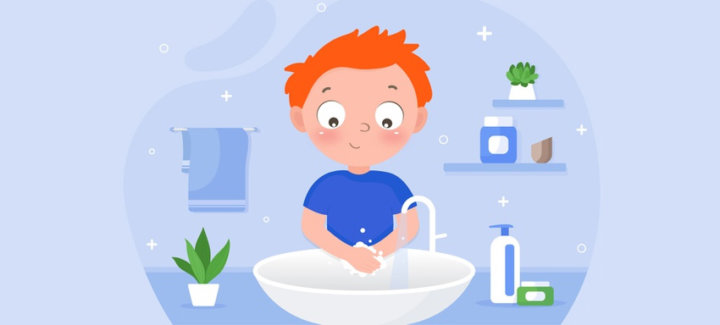Did you know the easiest way for germs and bacteria i.e. the pathogens to enter our bodies is via our hands?
We tend to touch endless things that are exposed to germs and bacteria throughout the day, transferring them onto our hands and eventually into our bodies. Once inside our bodies, these pathogens can cause major health problems for us as well as others. In fact, one of the easiest ways for COVID-SARS 19 is via our hands. As per the recommendation by CDC, to curb the spread of this virus, washing our hands and keeping them clean is the most effective method.
Even without the constant fear of the pandemic, you should periodically wash your hands before handling food and you shouldn’t do it just for the sake of washing. To kill the germs and bacteria and keep yourself safe, you are supposed to clean your hands thoroughly, as instructed by the Centers for Disease Control and Prevention (CDC). Cleanliness and hygiene are critical to lead a healthy life. By maintaining hygiene, you not only keep yourself healthy but also help others to do the same.
If you are curious to understand how to wash your hands correctly, this is the article for you. Before we hop on the appropriate way of washing hands, let’s acquaint you with the most critical times when you should wash your hands, avoiding which can expose you to some dangerous germs and bacteria, thereby causing health issues.
When Should You Wash Your Hands?
There is no specific rule book or a strict schedule to wash your hands, you can do this whenever required. However, there are certain situations and conditions when you should never avoid washing hands, to prevent the spread of germs. To guide you on when to wash your hands here is a quick list to go through:
- Pre and post the food preparation process
- Before and after having your meals or eating anything.
- After returning from your work or outside.
- Before and after interacting with someone who is sick.
- Before and after dressing a cut, burn or wound
- After dusting and mopping around your house
- After using the washrooms
- Before touching or feeding a child
- If and when you cough or sneeze
- After touching any properties that are frequently exposed to the general public like doors, transportation, railing, walls, ATMs, shop counters, etc.
- After touching an animal or pet, as well as their food and waste
- After handling garbage.
Recommended: FOOD SAFETY ALERT
How to Wash Your Hands Properly?
Washing your hands proves to be extremely effective in forestalling the spread of microbes and germs. However, this might not work if you do not wash your hands properly. To kill the germs completely you need to wash both your wrist area and palm thoroughly with the help of soap and water. Merely having the right ingredients doesn’t prepare your food, you need to cook it according to the recipe. Similarly, just using soap and water could not guarantee germ-free hands, you need to follow the correct procedure to wash your hands. Here are the steps you can follow while washing your hands to keep yourself healthy and hygienic.
- Wet your hands with running clean water. The temperature of the water does not matter, it can be warm or cold as per your preference.
- After wetting your hands, turn off the tap. Take enough soap in your hand and rub your hands together to create lather. Make sure to cover all the different areas of the hands- the palm area, the backside of your hands, the wrist area, between the fingers as well as the nails.
- Microbes are present throughout the surface of the hand, so the entire hand should be scrubbed and lathered properly. Scrubbing and lathering your palms creates friction, which helps lift germs and dirt from the hands. It is estimated that to clean the hands properly, you need to scrub them for at least 20 seconds.
- After lathering your hands properly, rinse them well under running clean water. Make sure the lather and soap are completely removed from your hands. Having made up of chemicals, if the soap enters your body, might harm you as well.
- Finally, dry your hands using a tissue, clean towel, or simply air dry them, which also takes around 20-30 seconds. Once done, turn off the tap with the towel or tissue, or wash the tap before touching it.
Conclusion
The change begins with you!
If you want a healthy and germ-free environment, it starts right from you. By following a hygienic routine, you not only keep yourself healthy but also contribute to social wellness as well. Though everyone should maintain hygiene, if you are in professions like medical or food-handling it becomes more critical.
If you are a food handler, your food is reaching many people, hence, lack of hygiene at your end might affect the health of many others. Considering this handwashing is considered one of the most essential parts of food hygiene in the Utah Online Food Handler Course– which is designed to help the food handlers understand the nitty-gritty of food handling hygienically. After completing the course you are considered eligible to become an authentic food handler, for which Utah awards you with the Utah Food Handlers Permit and Utah Food Handlers Certificate. Similarly, medical courses also focus on hygiene in their courses.
So now that you know the importance of cleanliness and hygiene, never hurry while washing your hands, Stay Calm, Safe, and Healthy.

